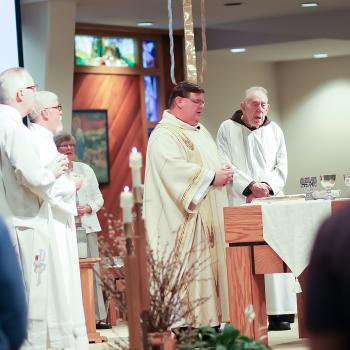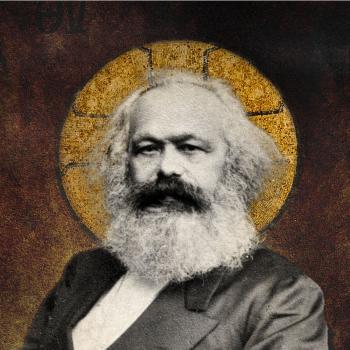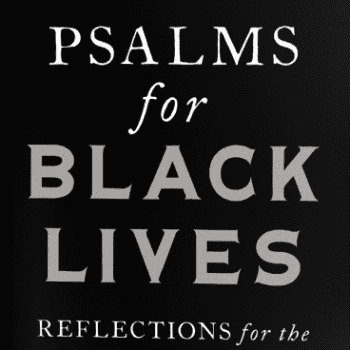Societas Homiletica: August 1-5, Yale University, New Haven, CT
Day One: Sunday Night
I’m attending the Societas Homiletica (SH) meeting at Yale Divinity School, New Haven, CT this week. It began this evening and goes until Thursday at 1 pm.
The SH is an international association of teachers of preaching who meet in various parts of the world every two years. Former meeting places include Copenhagen, Utrecht, and Durban. This year’s theme is “Picturing God in a Fragmented World.”
I made the trip from Dallas, Texas to New Haven (with stopover in Philly). I arrived at 8 pm at the Omni Hotel in New Haven, caught a cab to Yale Divinity School and tried to tiptoe unnoticed into the Chapel where the addresses by the Societas leaders were already well underway, having started at 7:30 pm. Sneaking in wearing squeaky shoes only causes the eyes of everyone present to light on you as you hunch toward the only open seat, which was reached by walking all the way around the perimeter of the room. I took that seat, took a few calming breaths, then gave my attention to the scene and speaker before me.
About 70 teachers of preaching from all over the world sat in the Chapel at Yale Divinity School. As the twilight set in outside around the beautiful room co- conveners Lucy Hogan and Thomas Troeger gave addresses that inspired us with their conviction that preaching’s day is still dawning. The theme of the conference is “Picturing God in a Fragmented World.” Dr. Hogan, who is the Hugh Latimer Elderdice Professor of Preaching and Worship at Wesley Theological Seminary in Washington, D.C. remarked that picturing God in a fragmented world is difficult partly because people (preachers included) have trouble picturing the preacher. Who is the preacher today? Not someone who has automatic authority because of ordination or credentials. Not just a conduit of a message that comes from beyond so that the preacher’s personality and experience and story are not part of what he or she brings to the preaching moment. Dr. Hogan spoke of the Incarnational image of the preacher. Quoting Charles Wesley’s beautiful hymn “O For a Thousand Tongues to Sing,” she commented that preachers don’t have 1,000 tongues. But we each have one and that one matters.
Drawing on the gospel story of Peter’s question, “Do you love me?” she encouraged teachers of preaching and preachers to “dip the oars into the fragmented waters of each of our cultures” and to expect a great catch as we proclaim God’s word to women and men in all our many contexts.
Dr. Thomas Troeger, J. Edward and Ruth Cox Lantz Professor of Christian Communication at Yale Divinity School , began by telling the story of a time when he was shopping for a shirt in a clothing store. A man came up to him and said, “You must be Henry Troeger’s son! I knew your father for many years. I would know that face anywhere!” Dr. Troeger said that, for the next several days, whenever he would see his face in the mirror when shaving or reflected in a store window when he was walking down the street, he’d say “Hi, Dad!” “I was so proud to have my father’s face, because he was a wonderful human being, gifted, healthy and giving.” But as time went on, the memory of that likeness faded some. Like the memory we all have of being created in the image of God.”
Dr. Troeger then went on to talk about barriers to preaching pictures of God, images of God in a fragmented world. He drew insights from several of the papers submitted by members of the Societas Homiletica that we’ll be discussing over the next few days in small groups. He encouraged all of us preachers from our varied contexts to appeal to the imaginations of our listeners, in helping them find meaning and coherence in their lives. He reminded us that the word “image” is at the heart of “imagination.” One of the papers dealt with virtual realities and fragmentation. It asked how can we use the fragments of our lives, those insights and jagged edges and events that don’t fit into a coherent whole, as tools in our preaching. God does wonders with fragments.
Dr. Troeger brought insights from the paper he wrote for the meeting, pointing out that making Christ the center of our lives may decenter our lives if they are focused on superficial values. He ended his talk by referring to Mark 12:14 where Jesus holds up a coin and asks, “Whose image is on this coin?” and then instructs those around him, “Then render to Caesar that which is Caesar’s and render to God that which is God’s.” Dr. Troeger reminded us that in Genesis God made us in God’s own image. “What is the image of God, the picture of God in a fragmented world? “ he asked. It is when the world looks at us and says “I would know that face anywhere!”
Tomorrow will be a full day of worship, key note addresses, small group discussions, workshops and paper presentations. I haven’t written a paper this time, so I’m hear to read and listen and learn.
I’ll write more tomorrow evening.
Alyce McKenzie is Professor of Homiltics at Perkins School of Thology, Southern Methodist University, Dallas, TX












